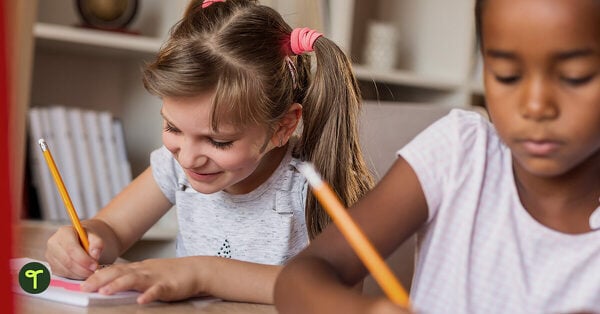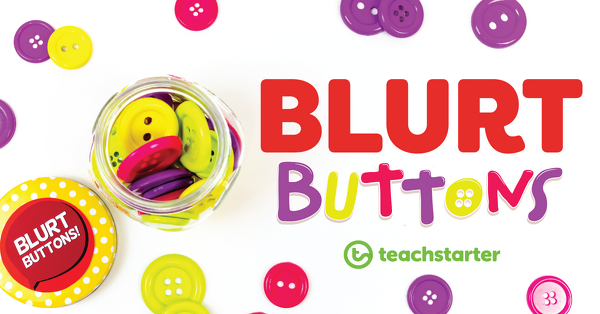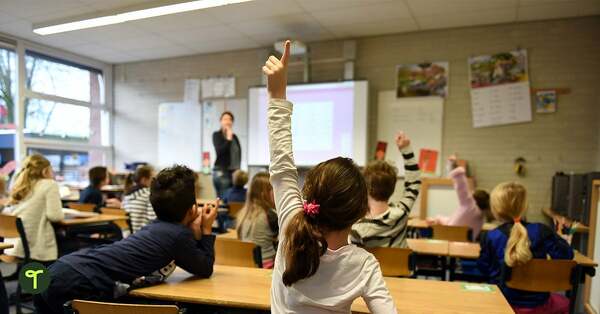Classroom Management Teaching Resources
Bring your classroom management strategies to life with resources created for teachers, by teachers, with your classroom in mind!
This collection of digital and printable resources was designed to help elementary and middle school teachers create and implement classroom management plans that are both effective and supportive, building a place where students thrive.
Looking for new strategies to try or ideas to build your classroom routines and establish consistency? Read on for a primer from our teaching team!
What Is Classroom Management?
Maybe you know all this already. Then again, maybe you've got so much information swirling around your head that you could use a quick refresher! That's what we're here for.
Classroom management is the name for all those tools that teachers have in their toolkit that help a classroom run smoothly. It can include everything from your classroom behavior management systems to your instructional techniques, and it helps you hold students accountable for misbehavior. It's the very foundation of your classroom climate.
We like to think of classroom management a bit like we think of the framework for a house — it provides the basic structure for your learning environment and sets you up for success as a teacher while also setting your students up for success as learners.
How to Set Up Effective Classroom Management
Now that we've talked about the what, let's talk about the how!
When you haven't been teaching very long, it can be hard to figure out what's important and what's just loud noise.
There is no one-size-fits-all classroom management plan that will work for every teacher. The age of your students, the year level you're teaching, the needs of your students, and even your personality will all play a role in the way you run your classroom. With that in mind, your classroom management plan may change year after year as your teach new groups of kids.
All that said, you do not have to reinvent the wheel! The teachers at Teach Starter have more than a century of classroom management experience when you put us all together (hey, we're not that old!).
This toolkit draws on that wealth of experience to offer actionable steps and tips to create the classroom management strategies, behavior management plans and more that you'll need to build meaningful relationships with your students.
We've cut out the noise and focused on the most important classroom management tools for your new teacher toolkit. Consider this your favorite new pair of noise-cancelling headphones!
Focus on the Teacher-Student Relationship
A classroom management strategy is only as good as the relationship built between a teacher and their students. Connecting with your students — focusing on their strengths and their efforts — will have an impact on the overall climate of your classroom.
Those connections with your students will also help you tailor your teaching approaches to your students' individual needs, interests and learning styles.
Establish Classroom Rules and Behavior Expectations
Good classroom rules are key to preventing behavior issues and providing a framework for correction.
Your rules and expectations are also tied intrinsically to your teacher-student relationship! When students feel connected to their teacher, they are more likely to internalize the teacher's expectations and classroom rules.
Build Clear Routines and Procedures
Classroom procedures and routines are the core of classroom management in elementary and middle school, and they help keep the school day running smoothly.
The research tells us that kids crave structure, but they also test it — which is where your rules and expectations come into play.
Employ Positive Reinforcement
Being recognized for doing something right or "good" is a powerful motivator for all of us, including our students. Praising your students for their efforts and achievements, as well as their adherence to classroom expectations, reinforces positive behavior and encourages their classmates to follow suit.
Focus on Active Student Engagement
Active learning strategies, such as group work, hands-on activities and interactive discussions help kids learn, but they also play directly into behavior management. Active learning keeps students engaged and reduces the likelihood of disruptive behavior. It also promotes students with a sense of ownership and participation in the learning process.
-

14 Ways to Improve Student Concentration That Really Work
How can you get students to focus and concentrate on the lesson at hand? Here are some research-backed tips for teachers to help students concentrate.
-

21 Easy Ways to Teach Students Organizational Skills
Are you wondering how to help your students develop their organizational skills in your classroom? These hints and tips may just help!
-

7 Clever Exit Ticket Ideas to Make This Assessment Tool Truly Effective
Are exit tickets effective? Try these fresh exit ticket ideas for the classroom to make this formative assessment idea work for your students!
-

Separation Anxiety Tips for Teachers: How to Make School Drop-Off Go Smoothly
Separation anxiety at school drop-off is common for young children. Here's how teachers can help their students manage the transition.
-

Blurt Buttons | A Fun Way to Curb Calling Out in the Classroom
Blurt Buttons are a bright, fun classroom management strategy to help curb calling out and manage impulsiveness and noise at school.
-

19 First Day of School Ideas + Printables for Teachers!
Explore these fun first day of school activities and printables teachers can use for an easy transition back to the classroom.
-

How to Create a Student-Led Classroom Social Contract in Elementary School
Learn how to create a classroom social contract that's truly got student buy-in and will enhance your classroom management.